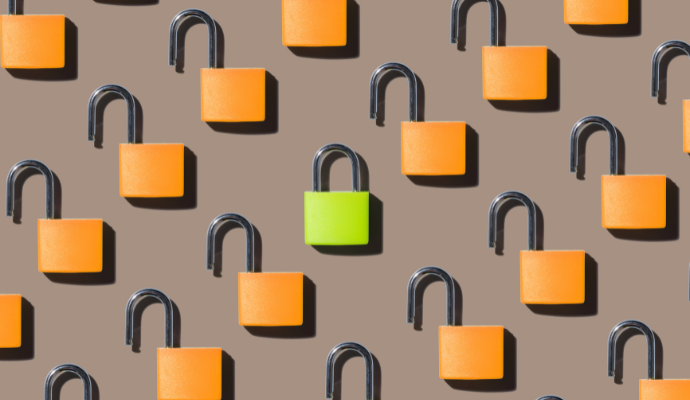100M People Lack Primary Care Access, Usual Source of Care
Researchers said community health centers, sometimes called federally qualified health centers, are instrumental in filling in gaps in primary care access.

Source: Getty Images
- A third of healthcare consumers are being left susceptible to public health threats and complications from untreated chronic illnesses as the US stares down primary care access problems, according to a new report from the National Association of Community Health Centers (NACHC).
The report found that more than 100 million American patients face some kind of primary care access barrier, with rural hospital closures and the primary care provider shortage driving that trend.
NACHC said these people are considered “medically disenfranchised” and that they do not have a usual source of care. The medically disenfranchised can come from many different income levels, locations, ages, races, ethnicities, and insurance statuses, but they are all considered medically underserved, the organization said.
“The primary care gap is deepening in underserved communities across our nation, and Community Health Centers are vital to filling in those gaps by providing critical routine health care services. The COVID-19 pandemic only illuminated existing healthcare inequalities in the most vulnerable areas of our nation, making it crystal clear the important role of health centers,” Rachel Gonzales-Hanson, the interim president and CEO of NACHC, stated publicly.
“The Closing the Primary Care Gap report illustrates an unfortunate picture of medically underserved Americans with a disproportionately higher risk of harm from preventable diseases – and one-quarter of them are children. Expanding access to primary health care must be a national priority.”
READ MORE: Top Challenges Impacting Patient Access to Healthcare
Currently, 31 states have over a million individuals who NACHC consider to be medically disenfranchised, painting a common and troubling problem in the US. States like Florida, Texas, California, and North Carolina have the largest number of residents who are medically disenfranchised, while New Mexico, Mississippi, Delaware, and Alabama have the highest proportion of people who are medically disenfranchised.
Medical disenfranchisement is likely driven by limited access to primary care providers, the researchers said. Only one in 10 people who are medically disenfranchised are uninsured, the team added, indicating that insurance access isn’t driving the lack of usual care source. Rather, there aren’t enough providers to meet the volume of patient healthcare needs, the team suggested.
But the primary care access problem is more nuanced than that, with cost being another key determinant. Around half (56 percent) of the medically disenfranchised have an income below 200 percent of the federal poverty level (FPL). These folks might have a hard time paying for their healthcare, even their copays, leading many to go without care.
Although the researchers said medically disenfranchised people can come from all backgrounds, they did point out that some of the most vulnerable do fall within this distinction. For example, a quarter of the medically disenfranchised population are children, a massive problem considering the role well-visits with a primary care provider play in child and adolescent development.
Moreover, certain racial groups are disproportionately represented when looking at subsections of the medically disenfranchised population.
Despite representing only 13.6 percent of the total US population, Black people represent 15.7 percent of the medically disenfranchised population. For Hispanic people, those figures shake out to 18.9 percent and 21.9 percent, respectively. Meanwhile, Asian American/Pacific Islander people are 1.3 percent of the total population but 3.5 percent of the medically disenfranchised.
The researchers observed the inverse for White people; despite representing 75.8 percent of the total US population, they are only 68.7 percent of the medically disenfranchised.
These numbers indicate that Black, Hispanic, and AAPI people are more likely to live in areas with provider shortages or lack the resources to access care.
Community health centers are going to be instrumental in closing these care access gaps, the researchers said. Without community health centers, 15 million more people would be at risk of being medically disenfranchised, the researchers said, meaning that these healthcare organizations—which largely treat individuals in medically underserved areas and populations—will be key moving forward.
What’s more, health outcomes are good in these settings, the authors mentioned. Patients getting care at a community health center are more likely to have their hypertension or diabetes under control compared to national statistics.
The report also showed that people served by community health centers are less likely to experience care gaps, with these care sites having higher rates of smoking cessation, patient education, immunization, and certain preventive screenings than patients of other providers.
Community health centers, also commonly called federally qualified health centers (FQHCs), have become more common in recent years, with the number of patients served increased by 6 million, or 24 percent, since 2015. That growth could continue, and potentially upend trends toward medical disenfranchisement, with better funding, the report authors indicated.
“The health center program has grown in the last five years to serve more patients and expand specialty services such as behavioral health, dental, and vision services in medically underserved communities,” the report concluded. “With sufficient resources, the health center program can expand into more underserved communities and continue to close the gap in primary care for America’s medically disenfranchised population.”
